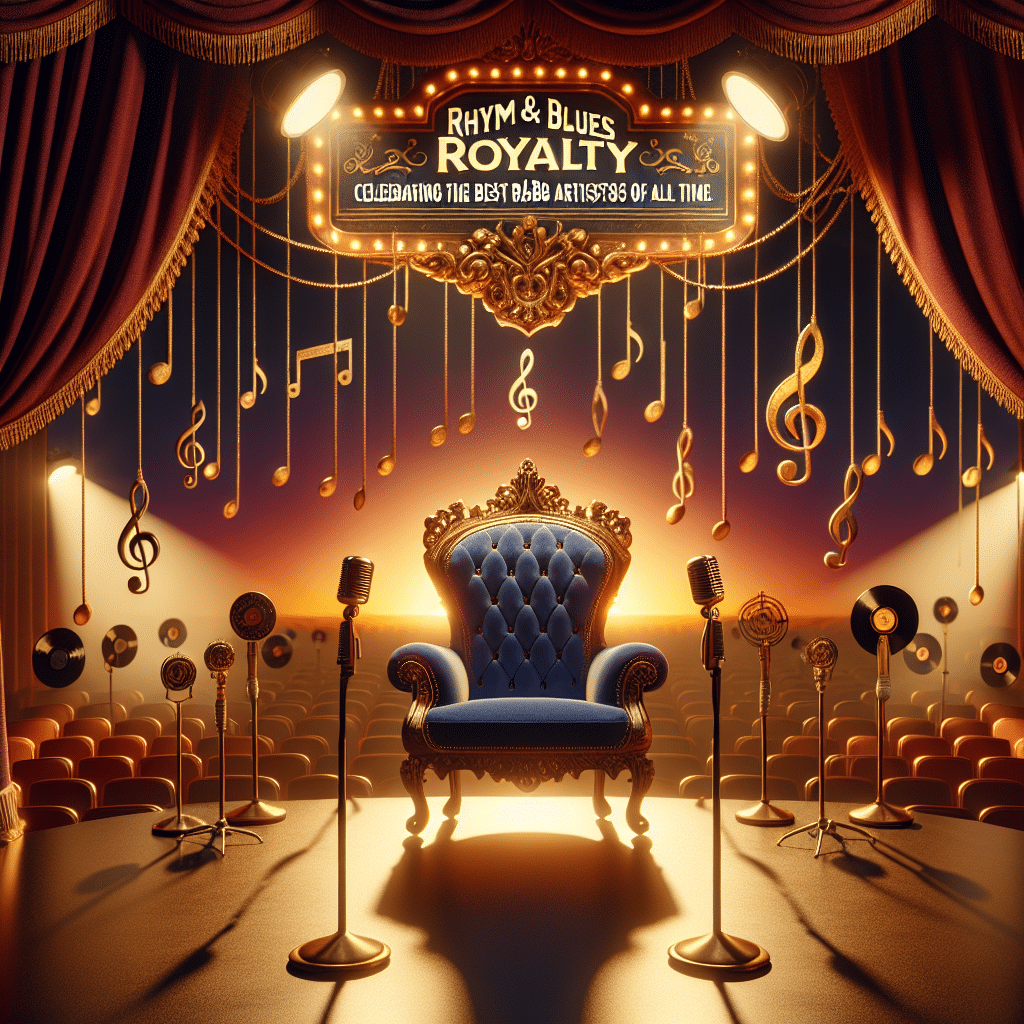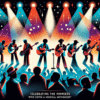Rhythm & Blues Royalty: Celebrating the Best R&B Artists of All Time

Introduction
Rhythm and Blues (R&B) is more than just a genre of music; it's a profound expression of the African American experience and an influential force shaping popular music worldwide. Originating in the 1940s, R&B evolved from earlier musical forms such as gospel, jazz, and blues, creating a unique sound that resonates deeply with audiences. This article takes a closer look at the historical context of R&B, celebrates key artists who have shaped the genre, examines ongoing trends, and reflects on its cultural impact. Join us on this journey to honor the Rhythm & Blues royalty.
Historical Context
The roots of Rhythm and Blues can be traced back to the early 20th century when African American musicians began fusing elements of folk, spirituals, and blues into a dynamic sound. Post-World War II, the term "Rhythm and Blues" was coined by the music industry to describe a style appealing to black audiences, incorporating jazz arrangements and poignant lyrics.
By the 1950s, artists like Ray Charles and Ruth Brown emerged, bringing R&B into mainstream consciousness. Charles's fusion of gospel and blues laid the groundwork for modern R&B, while Brown's hits established her as the "Girl with the Black Voice." The genre's rise coincided with the Civil Rights Movement, underscoring music's role in social change.
See Also: From the Studio to the Charts: How These R&B Artists Redefined Success
From the Studio to the Charts: How These R&B Artists Redefined SuccessIn the 1960s and 70s, R&B diversified and included sub-genres like soul and funk, with artists such as Aretha Franklin and James Brown pushing the boundaries of musicality and performance. The establishment of Motown Records in 1959 acted as a pivotal catalyst, propelling R&B into the global mainstream with hits from artists like The Supremes, Marvin Gaye, and Stevie Wonder.
As the genre matured, it continued to evolve with the emergence of disco in the late 70s and the New Jack Swing movement in the late 80s, further solidifying R&B's versatility and relevance.
Key Artists
Ray Charles
Widely recognized as a pioneer, Ray Charles single-handedly blended gospel, blues, and jazz influences to create a unique sound that laid the groundwork for modern R&B. His iconic songs, such as "Georgia on My Mind" and "What'd I Say," showcased his ability to convey deep emotion through music, breaking barriers in the early years of R&B.
See Also: New Vibes Only: Exploring the Latest R&B Releases Shaping the Genre
New Vibes Only: Exploring the Latest R&B Releases Shaping the GenreAretha Franklin
The "Queen of Soul," Aretha Franklin, is arguably one of the most significant figures in R&B history. With hits like "Respect" and "(You Make Me Feel Like) A Natural Woman," she became a symbol of empowerment and sophistication. Franklin’s powerful voice and undeniable charisma changed the face of R&B, paving the way for female artists.
Stevie Wonder
Stevie Wonder’s career has been marked by innovation and creativity. A musical prodigy, Wonder's blend of soul, funk, and pop, highlighted in songs like "Superstition" and "Isn't She Lovely," reflects his mastery of various musical styles. His incorporation of socially conscious themes into his work further solidified his importance in R&B and beyond.
Whitney Houston
See Also: Modern Icons: Discover the R&B Artists Shaping the Future of Music
Modern Icons: Discover the R&B Artists Shaping the Future of MusicOften hailed as one of the greatest vocalists of all time, Whitney Houston dominated R&B in the late 80s and 90s. With her powerful voice and impeccable technique, Houston redefined R&B and pop with chart-topping hits like "I Will Always Love You" and "Greatest Love of All." Her soaring success helped bridge gaps between R&B, pop, and gospel.
Beyoncé
A modern icon in R&B, Beyoncé has continuously pushed the genre's boundaries through innovation, artistry, and cultural significance. From her early days with Destiny's Child to her solo career, she has addressed themes of empowerment, feminism, and social justice through her music. Albums like "Lemonade" showcase her creativity and evolution as an artist.
Current Trends
Today, R&B continues to adapt and evolve, merging with other genres like hip-hop, electronic, and indie music. As streaming platforms redefine the music industry, emerging artists such as SZA, H.E.R., and Khalid are infusing contemporary sounds into the genre, reflecting the changing tastes of younger audiences.
See Also: From Classic to Contemporary: A Guide to the Best R&B Artists You Should Know
From Classic to Contemporary: A Guide to the Best R&B Artists You Should KnowFurthermore, R&B is experiencing a resurgence of its classic elements, with artists like Anderson .Paak and Bruno Mars revisiting funk and soul roots to create a nostalgic yet fresh sound. Collaborations between R&B and hip-hop artists have become increasingly common, creating a hybrid genre that appeals to fans of both styles.
Cultural Impact
The cultural impact of Rhythm and Blues extends far beyond music; it has played an essential role in social change and raising awareness of civil rights issues. R&B artists often use their platforms to address topics like racism and empowerment, advocating for justice and equality through their lyrics.
R&B has also influenced fashion, dance, and cultural identity, with its artists serving as trendsetters and cultural ambassadors. The genre continues to resonate with diverse audiences, promoting a sense of shared experience and cultural exchange.
Conclusion
See Also: Soul Legends: Celebrating the Pioneers Who Defined a Musical Movement
Soul Legends: Celebrating the Pioneers Who Defined a Musical MovementThe legacy of Rhythm & Blues royalty is deeply intertwined with the fabric of American culture and has left an indelible mark on the music industry and the world at large. The artists who have defined R&B have transcended musical boundaries, influencing numerous genres and inspiring generations of musicians. Through their contributions, they embody the spirit of resilience, creativity, and the pursuit of artistic freedom.
As we celebrate the best R&B artists of all time, we remember their music as a powerful vehicle for change and a testament to the human experience, proving that rhythm and blues will always find resonance in the hearts of people everywhere.
FAQs
1. What is Rhythm and Blues (R&B)?
Rhythm and Blues is a music genre combining elements of jazz, blues, and gospel. Its origins can be traced back to the 1940s, and it has significantly influenced contemporary music styles, including soul and funk.
See Also: The Evolution of R&B Love Songs: From Classic Soul to Modern Melodies
The Evolution of R&B Love Songs: From Classic Soul to Modern Melodies2. Who are some of the most influential R&B artists?
Some of the most influential R&B artists include Ray Charles, Aretha Franklin, Stevie Wonder, Whitney Houston, and more recently, Beyoncé, SZA, and Khalid.
3. How has R&B evolved over the years?
R&B has evolved from its roots in the 1940s to incorporate various styles, including soul, funk, and hip-hop. Currently, it is experiencing trends that blend traditional sounds with modern influences, fostering innovation.
4. What role has R&B played in social change?
R&B has historically served as a platform for addressing social issues, particularly those related to civil rights and empowerment. Many artists use their music to promote equality and justice, reflecting broader societal changes.
See Also: Melodies of a Generation: Top 10 R&B Classics You Still Can't Resist
Melodies of a Generation: Top 10 R&B Classics You Still Can't Resist5. Why is R&B significant in contemporary music?
R&B remains significant as it continues to shape trends in popular music, influencing genres like hip-hop and pop. Its rich history and cultural impact resonate with audiences, making it a foundational element of the music industry.
If you want to know other articles similar to Rhythm & Blues Royalty: Celebrating the Best R&B Artists of All Time you can visit the category R&B.
